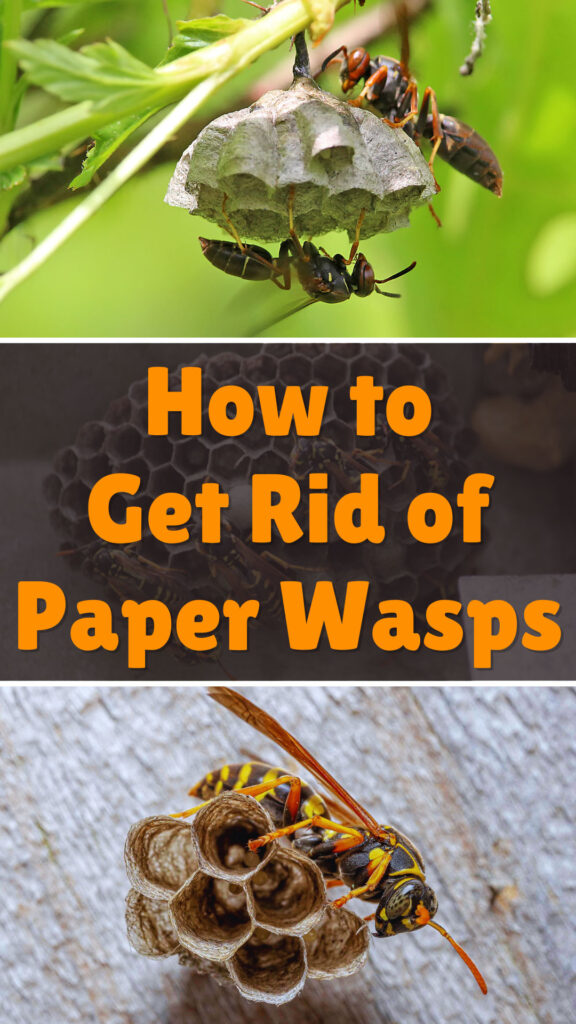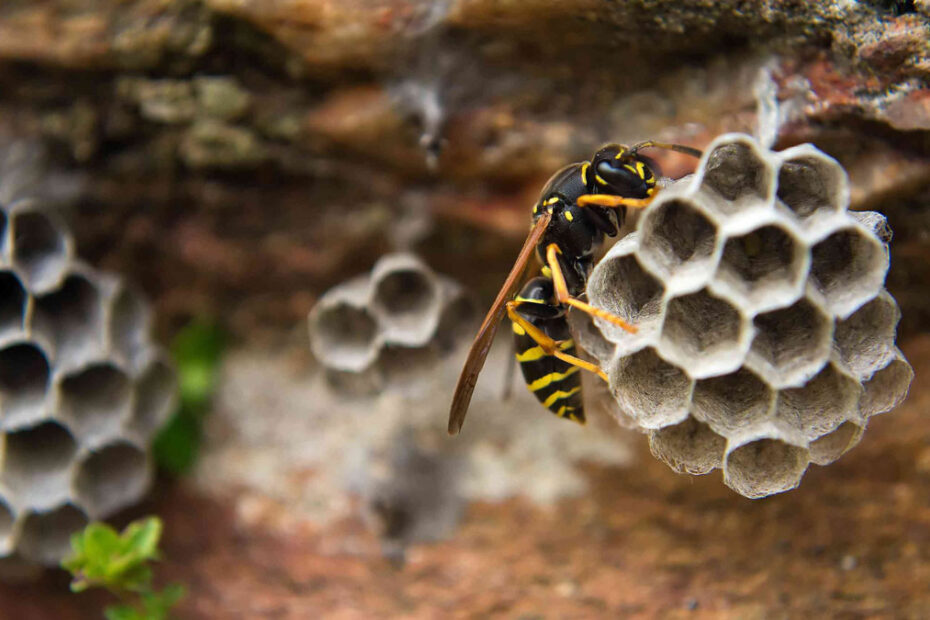Paper wasps can turn your peaceful backyard into a battleground. These stinging insects build their nests in the most inconvenient places, making outdoor activities a risky try. Understanding how to safely and effectively get rid of paper wasps is crucial for reclaiming your outdoor space.
You don’t need to be an expert to tackle a paper wasp problem. With the right knowledge and tools, you can handle these pests without putting yourself in harm’s way. In this guide, you’ll learn practical steps to remove paper wasps and keep them from coming back, ensuring your home remains a safe and enjoyable place.
Key Takeaways
- Understanding Paper Wasps: Knowing their appearance, nesting habits, and behavior helps in identifying and managing them effectively.
- Prevention Tactics: Regular inspections, sealing entry points, and using natural deterrents are essential strategies to prevent wasp infestations.
- Safe Removal Methods: Equip yourself with protective gear and use DIY methods or professional pest control for effective and safe removal.
- Importance of Aftercare: Consistent monitoring and long-term preventive measures ensure that wasps do not return, maintaining a safe outdoor environment.
- Ecological Role: Recognize that paper wasps contribute to controlling pest populations and pollination, and manage them responsibly.

Understanding Paper Wasps
Paper wasps might seem like just another type of wasp, but they have distinctive behaviors and characteristics. Gaining a clear understanding of these insects can help you effectively manage and remove them from your surroundings.
Key Characteristics
Appearance: Paper wasps typically measure about 0.75 to 1 inch long. They have slender bodies with long legs, and their colors range from reddish-brown to dark brown with yellow markings.
Nests: Paper wasp nests are easily identified by their open, umbrella-shaped structure. Constructed from a mix of chewed wood fibers and saliva, the nests have exposed cells where the larvae reside.
Diet: Paper wasps are predators, primarily feeding on caterpillars, flies, and beetle larvae. They also consume nectar, which helps in pollination.
Behavior and Lifecycle
Social Structure: Paper wasps are social insects, living in colonies that can range from a few dozen to several hundred individuals. Each colony has a caste system, including a queen, workers, and males.
Reproduction: The life cycle starts when a fertilized queen emerges in spring and begins building a new nest. She lays eggs that hatch into larvae, which workers feed until they pupate and emerge as adults.
Seasonal Activity: Activity peaks during warmer months. In colder regions, colonies die off in winter, but fertilized queens hibernate and start new colonies in spring.
Importance
Ecological Role: By controlling pest populations, paper wasps play a crucial role in ecosystems. Their predatory habits keep the population of harmful insects in check.
Pollination: While not as effective as bees, wasps contribute to pollination when they forage for nectar, inadvertently transferring pollen from flower to flower.
Prevention and Control
Understanding paper wasps’ habits aids in preventing infestations. You can deter them by removing potential nest sites, such as old structures and enclosed areas. Regular maintenance and early nest removal are essential in preventing larger colonies.
- Remove potential nesting sites: Discard old wood, seal crevices in eaves, and maintain structures to clear spaces where nests might form.
- Use natural deterrents: Planting wasp-repellent herbs like mint, thyme, and citronella around your property helps deter colony formation.
- Monitor and remove early nests: Inspect your property regularly in early spring and remove small, newly built nests before they grow.
By gaining a thorough understanding of paper wasps, you’re better equipped to handle these insects responsibly and restore a safe, enjoyable outdoor environment.
Identifying Paper Wasps
Identifying paper wasps is crucial for safe removal. Knowing their appearance and nest locations helps you tackle the problem effectively.
Physical Characteristics
Paper wasps have distinctive features. Here are key traits:
- Size: Paper wasps measure 0.75 to 1 inch in length.
- Color: They exhibit brown, black, or reddish hues with yellow markings.
- Wings: When at rest, their wings fold longitudinally.
- Body Shape: Their bodies are slender with a narrow waist.
Nest Locations
Paper wasps build nests in sheltered areas. Common nest sites include:
- Eaves and Overhangs: Nests under eaves or porch overhangs are typical.
- Attics and Sheds: They often inhabit attics, garages, or sheds.
- Vegetation: Low shrubbery and tree branches provide good spots.
Identifying these traits and locations ensures prompt and safe removal of paper wasps from your surroundings.
Prevention Strategies
Adopting prevention strategies can reduce the likelihood of paper wasp infestations. Proactive measures promote a safe and wasp-free environment.
Regular Inspections
Inspect your property consistently to spot potential nesting sites early.
Inspection Tips:
- Eaves and Overhangs: Check these areas as paper wasps prefer sheltered, horizontal surfaces.
- Attics and Storage Areas: Dark, undisturbed places can be nesting hotspots.
- Vegetation: Trim shrubs and trees near your home to minimize concealed sites.
- Furniture: Examine outdoor furniture, grills, and playsets regularly for nests.
By making inspections a routine, you can notice and address wasp activity before it escalates.
Sealing Entry Points
Prevent wasps from entering and nesting in your property by sealing entry points.
- Windows and Doors: Ensure all screens are intact and fit tightly.
- Cracks and Gaps: Use caulk or weather stripping to seal any cracks in walls, foundation, or around utility lines.
- Vents and Chimneys: Install mesh screens to block entry while maintaining ventilation.
- Garages and Sheds: Keep doors closed and seal any openings that could provide access.
Sealing these entry points reduces the chances of wasps establishing nests within your structures, keeping your space secure and insect-free.
Regular inspections and effective sealing significantly mitigate the risk of paper wasp infestations. Carry out these strategies to maintain a safe and wasp-free environment.
Safe Removal Methods
Safely removing paper wasps from your property is crucial for preventing stings and potential allergic reactions. You’ll need to decide between DIY methods and professional pest control.
DIY Solutions
Protective Gear: Wear long-sleeved shirts, pants, gloves, and a face mask to minimize exposure to wasp stings.
Insecticidal Sprays:
- Use sprays specifically labeled for wasps.
- Apply during the evening or early morning when wasps are less active.
- Stand at a distance and aim directly at the nest’s opening.
Soap and Water: Mix two tablespoons of dish soap with water in a spray bottle. Spray the solution on the nest to block the wasps’ breathing pores.
Vacuum Removal: Use a shop vacuum with a long hose. Fill the vacuum with soapy water to ensure the wasps are killed.
Wasp Traps:
- Purchase pre-made traps or create your own using a plastic bottle.
- Fill with a mixture of sugar water and dish soap.
- Place the trap near the nest but away from human activity.
Professional Pest Control
Assessment: A professional inspects the property to identify nest locations and wasp species.
- Tailored solutions, such as insecticidal dust, liquid treatments, or baiting systems.
- Ensure comprehensive coverage to target all nests.
Safety Measures: Experts use specialized gear and techniques to minimize risks to humans and pets.
Follow-Up: Scheduled visits post-treatment to ensure the complete elimination of wasps and to provide preventive advice.
Guarantee: Many professionals offer guarantees, ensuring the pests don’t return within a specific period.
Utilizing these safe removal methods, you can effectively manage and prevent paper wasp infestations.
Aftercare and Follow-Up
Once you’ve successfully removed paper wasps, it’s essential to practice consistent aftercare and follow-up measures. Ensuring the wasps don’t return requires attention and proactive steps.
Monitoring for Recurrence
Begin monitoring the area regularly for any signs of new wasp activity. Here are key points to focus on:
- Inspections: Conduct weekly inspections of potential nesting sites, like eaves, attics, and outdoor furniture.
- Early Detection: Look for small nests or wasp activity early in the season (spring), making it easier to manage.
- Behavior Changes: Notice any changes in wasp behavior, such as increased number or aggression in your outdoor space.
Long-Term Preventive Measures
Adopt long-term strategies to deter wasps from returning. Effective preventive measures include:
- Sealing Entry Points: Close gaps and cracks around windows, doors, and roofs to prevent wasps from entering structures.
- Maintenance: Regularly maintain your garden and outdoor spaces by trimming vegetation and removing potential nesting sites.
- Using Deterrents: Place natural deterrents, like peppermint oil or wasp-repelling plants, around common nesting areas.
Taking these aftercare and follow-up steps ensures ongoing safety and comfort in your outdoor environment.
Conclusion
Dealing with paper wasps can be challenging, but with the right knowledge and tools, you can reclaim your outdoor space safely. By understanding their behavior and identifying their nests, you can take effective steps to remove and prevent these pests.
Regular inspections and preventive measures are key to keeping your home environment safe and enjoyable. Whether you choose DIY methods or professional pest control, always prioritize safety to avoid stings and allergic reactions.
Implementing long-term strategies will help ensure that your outdoor areas remain wasp-free. Stay vigilant and proactive, and you’ll maintain a comfortable and secure space for all your outdoor activities.
Frequently Asked Questions
What are the characteristics of paper wasps?
Paper wasps are typically ¾ to 1 inch long with a slender, segmented body. They have smoky black wings, a pinched waist, and are often brownish with yellow markings. Their nests look like gray, papery umbrellas and are usually found in sheltered, high areas.
How can I safely remove a paper wasp nest?
Wear protective clothing and approach the nest at night when wasps are less active. Use insecticidal sprays specifically designed for wasps, or a soap and water solution. For large infestations, consider contacting professional pest control services.
What should I do if I get stung by a paper wasp?
Clean the sting site with soap and water. Apply ice to reduce swelling and take an antihistamine to relieve itching. If you experience severe reactions like difficulty breathing, seek medical attention immediately.
Where do paper wasps commonly build their nests?
Paper wasps often build nests in sheltered locations such as eaves, attics, hollow trees, or shrubs. They may also nest in attics, unused sheds, and under decking.
How can I prevent paper wasps from nesting around my home?
Regularly inspect and remove potential nesting sites, seal entry points around windows and doors, and maintain outdoor areas to deter nesting. Using natural deterrents like essential oils can also help.
Can paper wasps be beneficial?
Yes, paper wasps help control pest populations by hunting caterpillars and other insects. They also play a minor role in pollination, as they feed on nectar.
Why should I consider professional pest control for paper wasps?
Professional pest control services can assess your property, provide tailored solutions, ensure safety during removal, and offer guarantees to prevent future infestations. This is especially useful for large or hard-to-reach nests.
What are some DIY methods for controlling paper wasps?
DIY methods include insecticidal sprays, soap and water mixtures, vacuum removal, and setting up wasp traps. Always wear protective gear and follow safe removal practices.
How often should I inspect my home for paper wasp activity?
Regular inspections, particularly in spring and summer, are recommended. Check eaves, attics, vegetation, and outdoor furniture for early signs of wasp activity to address issues before infestations grow.
What long-term measures can I take to prevent paper wasp infestations?
Seal entry points, maintain clean and clutter-free outdoor spaces, and use natural deterrents like peppermint oil. Regularly inspect your home and yard to catch early signs of wasp activity and promptly remove nests.
